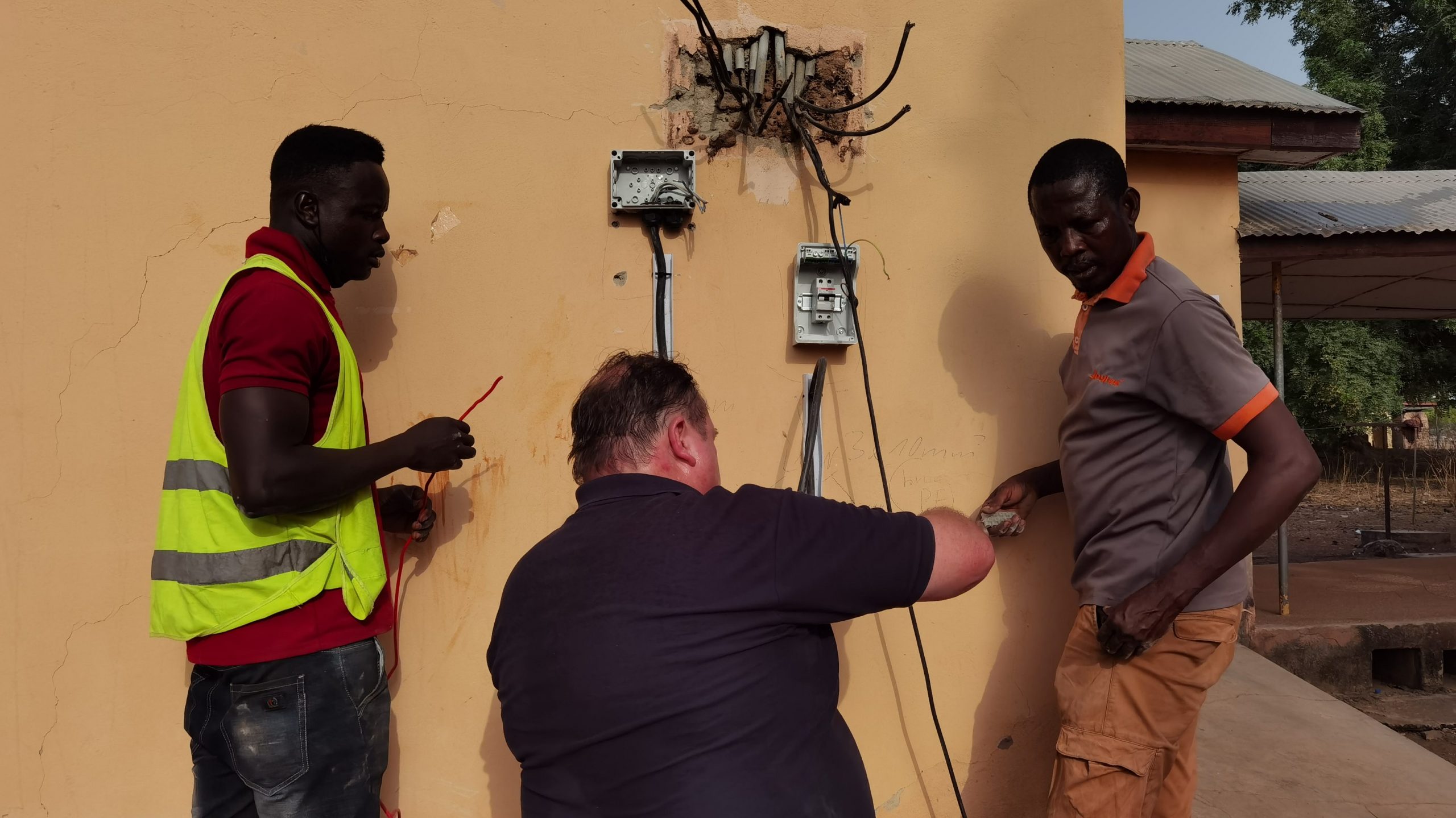
In November 2020, our partner WestfalenWIND travelled to Ghana to install a PV-hybrid power system at Kologo, Ghana. In March 2021, Mohammed Abass returned to the health facility to finish the set-up. In this article, he illustrates the necessity, application, and management of the system.
Article & Pictures by Mohammed Abass
In Twi, one of the local languages in Ghana, dumsors are power cuts due to low voltage or high-energy demand. They happen frequently and can last for days or weeks. Dumsors impede the work progress of many companies and workplaces, especially health facilities, where electric power is needed the most. Sometimes, communities even must take turns to not overstrain the electricity grid. This is a huge problem for health centres, as they need cooling systems for their vaccines and other drugs that need to be stored at certain temperatures.
A way to solve the problem are Photovoltaic (PV)-Hybrid power systems. One of these systems has been set up by the EnerSHelF project at the Upper East region of Ghana at the Kologo Health Centre. This aids the health facility to run 24/7 free from any power outages that may occur.

The PV-Hybrid power system is made up of 24 solar panels (7.2 kW peak), 12 kW of lithium batteries to withstand the charging and discharging stresses, 3 kW single-phase inverter to bring power from the single-phase grid to charge the lithium batteries when needed, as well as a 10 kW 3-phase inverter to take DC electric power from the solar/lithium batteries and convert it into 3-phase AC current. The power system functions in such a way that there is constant electric power supply, which helps to keep the vaccines and other drugs at the right temperature and electric current to other equipment.
During the day, the solar panels harvest the sun’s energy and convert it to electricity, charging the lithium batteries and supplying 3-phase AC current by the help of the 10 kW 3-phase inverter. In addition, whenever the weather is cloudy, rainy or darkness sets in, the 3 kW single-phase inverter takes power from the grid through the single-phase metre to charge the lithium batteries. This PV-Hybrid power system ensures the constant supply of electric power to the health centre. There is always electricity at the health centre and even if there is a dumsor, the 12 kW lithium batteries act as a secondary backup for the hospital. However, the PV-Hybrid power system sometimes goes off at night. This is due to the slow charging rate of the lithium batteries by the single-phase inverter from the grid, as compared to the power output that goes in 3-phase to the loads.

